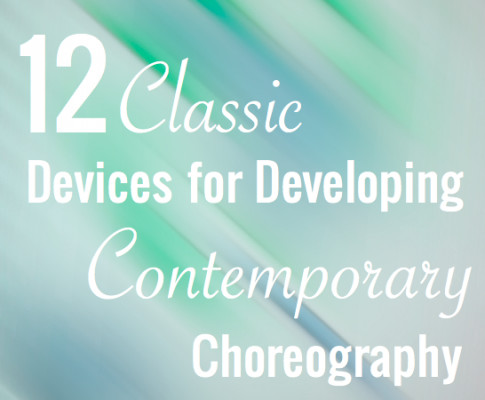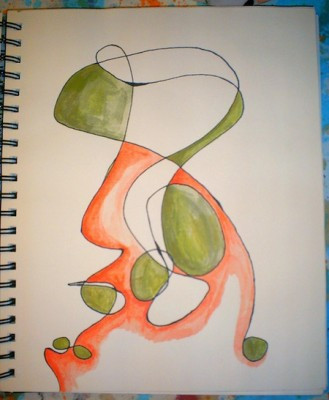Are you feeling stuck in a choreographic rut? Do your contemporary dance pieces feel like echoes of past inspirations? Many dance educators and choreographers face the challenge of finding fresh, original voices in their work. One powerful method to break free from creative limitations and ignite originality in both your choreography and your students is through incorporating Dance In Games.
This approach, focusing on collaborative dance-making using choreographic games, offers a dynamic and engaging way to generate movement material and foster student ownership in the creative process. Inspired by Melanie Doskocil’s insightful techniques, we’ll explore how integrating dance in games can revitalize your choreography and bring a new level of excitement to your dance classroom.
For many, the blank canvas of choreography can be daunting. The pressure to create something unique and compelling can sometimes stifle the very creativity we seek to unleash. This was the feeling Melanie Doskocil experienced, prompting her to explore a different approach for her advanced students’ annual recital. Instead of arriving with pre-set movements, she initiated a three-day workshop centered around choreographic games. This shift empowered her students to become active creators of movement, with Melanie then skillfully weaving their contributions into a cohesive and innovative piece. The result was a resounding success, celebrated for its originality and the students’ palpable engagement.
This experience highlights the transformative power of dance in games. It’s not just about playful activities; it’s a strategic methodology to unlock creativity, build collaboration, and develop unique choreographic voices. As summer offers a perfect window for creative exploration, let’s delve into a collection of classic choreographic games that can be adapted and integrated into your teaching and choreographic process.
 12 Classic Devices For Developing Contemporary Choreography
12 Classic Devices For Developing Contemporary Choreography
These games, inspired by masters like Eiko and Koma, Viola Faber, and many others, provide structured yet open-ended prompts for movement exploration. They are not just fun; they are designed to push creative boundaries and generate movement that is both personal and innovative. Let’s explore how you can use these “games” to infuse your choreography with fresh ideas and make dance creation a truly collaborative adventure.
Choreographic Games to Spark Movement and Innovation
Here are twelve engaging choreographic games that can be incorporated into your classes and rehearsals to inspire creativity and generate unique movement vocabulary:
1. First Dance: Embracing Individual Dance Histories
This game is particularly effective for getting to know new students and understanding their diverse dance backgrounds. Begin by asking each student about their first experience with dance – what style did they start with? Then, have them create and perform a short movement phrase or step that embodies that initial dance style.
This activity serves multiple purposes. It allows students to share a personal aspect of their dance journey, fostering a sense of connection within the group. It also exposes the group to a variety of dance styles, potentially sparking unexpected movement ideas and combinations. By exploring their “first dance,” students tap into the foundational elements of their dance identity, which can be a rich source of original movement.
2. Name Game: Exploring Body Awareness and Level Change
The “Name Game” is a fantastic way to explore spatial awareness, body part articulation, and level changes. Start by asking students to “write” their name in the air using a large, fluid movement. Next, challenge them to write their name with their non-dominant hand, prompting them to think differently about movement control and coordination.
To further develop this concept, assign a different body part to each student – elbow, nose, knee, etc. – and have them “write” their name using only that body part. The rest of the group can then guess the body part being used. Finally, introduce level changes. If students were standing, ask them to write their name sitting down, or even lying down. Encourage them to expand the scale, writing their name across the entire room or condensing it into a small space. This game encourages creative problem-solving and expands students’ understanding of how movement can be expressed through different body parts and spatial planes.
3. Gesture Game: Communicating Universally and Personally
The Gesture Game, divided into two parts, delves into the power of non-verbal communication and personal expression.
Part A: Universal Gestures
Begin by discussing universal gestures – movements that transcend language barriers. Imagine being stranded on an alien planet; how would you communicate basic needs? Ask each student to demonstrate a universal gesture, like pointing, waving, or shrugging. This exercise highlights the inherent communicative power of movement and encourages students to think about clarity and intention in their gestures.
Part B: Personal Gestures within Context
Shift the focus to personal gestures rooted in familiar activities. Choose a common scenario, such as being in a classroom, commuting in a car, or having a picnic. Ask students to brainstorm four specific gestures they would typically perform during that activity (e.g., raising a hand in class, checking mirrors while driving, reaching for food at a picnic).
Next, have them string these four gestures together into a short movement phrase. Encourage them to exaggerate the scale of these gestures, making them “larger than life.” Partner students up, and have each partner teach their phrase to the other. Finally, combine the two phrases, exploring how they interact and potentially create a more complex movement sequence. This game connects movement to everyday experiences, making it relatable and fostering personal expression through gesture.
4. Adjective Game: Infusing Movement with Emotion and Quality
The Adjective Game is designed to explore how emotional and qualitative descriptors can transform a set movement phrase. Before the session, prepare a short movement phrase (8-32 counts) and write down various adjectives on slips of paper – words like “hot,” “tired,” “excited,” “blue,” or “tenacious.”
Teach the students the base movement phrase. Then, have each student randomly draw an adjective from a hat. Their task is to perform the same movement phrase but embody the drawn adjective. The other students then try to guess the adjective being expressed through the movement. This game brilliantly demonstrates how intention and emotional context can drastically alter the interpretation and impact of even a simple movement phrase, highlighting the importance of performance quality and emotional expression in dance.
5. Props Games: Extending Movement Possibilities
Props games are a fantastic way to introduce unexpected elements and stimulate improvisation. Here are two variations:
 The contents of a dance bag
The contents of a dance bag
Game 1: Student-Sourced Props
Ask students to look inside their own dance bags or pockets for any item they have with them. Challenge them to select one item and create a short movement phrase inspired by or incorporating that prop. This spontaneous approach encourages resourcefulness and demonstrates how everyday objects can become catalysts for creative movement.
Game 2: Teacher-Provided “Goodie Bag”
Prepare a bag filled with diverse and intriguing items – cards, chapstick, candles, food wrappers, postcards, small toys, etc. Items with writing or interesting textures are particularly effective. Have each student draw an item from the bag and create a movement phrase based on their chosen prop. There are no limitations – students can be inspired by the item’s shape, texture, function, words, or even the feelings it evokes. This game encourages imaginative thinking and demonstrates how external stimuli can spark diverse movement ideas.
6. Parameters: Structured Creative Constraints
The “Parameters” game introduces structured limitations to guide creative exploration. Give students a specific set of parameters or rules that their movement phrase must adhere to. For example:
“Create a 16-count phrase that must:
- Begin with a classical ballet waltz turn.
- Include at least one other type of turn (pirouette, pique turn, etc.).
- Change levels from standing to floor and back to standing at least once.
- Incorporate at least one non-classical movement and at least one classical movement.”
By providing clear boundaries, this game focuses creativity within a defined framework. It encourages students to problem-solve within constraints and often leads to surprisingly inventive movement solutions as they navigate the given parameters.
7. Phrasing: Manipulating and Expanding Movement Sequences
This game focuses on manipulating existing movement phrases to create new variations and explore choreographic structuring.
Retrograde: Once a phrase exists (created by the teacher or students), introduce the concept of retrograde – performing the phrase in reverse. Challenge students to not just reverse the order of steps, but to truly “rewind” each movement as if playing a video backward. This technique reveals new facets of the original phrase and encourages detailed attention to movement sequencing.
Combinations: Teach 4 simple movements (A, B, C, D). Then, experiment with combining these movements in different sequences – A-B-A-C, D-C, A-B-C-D-D-C-B-A, etc. As students become comfortable, the simple moves can evolve into short phrases, and these phrases can be combined into larger structures (ABA, CDC, etc.). This game emphasizes the building blocks of choreography and how simple elements can be combined and recombined to create complex and varied sequences.
8. Alternate Facing: Shifting Perspective and Spatial Awareness
The “Alternate Facing” game explores how perspective alters the perception of movement and enhances spatial awareness. Create a short 8-16 count phrase. Have students perform and then observe it from different perspectives – front, back, and sides. Discuss how the movement looks and feels different from each vantage point.
To further challenge their spatial thinking, ask students to imagine the floor is transparent and the audience is viewing them from below. How would they create movement that would be visually interesting from this unusual perspective? This game encourages dancers to think beyond a frontal perspective and consider the dimensionality of space in their movement choices.
9. Follow the Leader: Group Dynamics and Spontaneous Response
 A school of barracuda follow the leader
A school of barracuda follow the leader
“Follow the Leader” in a dance context is a dynamic game for developing quick thinking and group awareness. Instead of a line, have students cluster together loosely. One person at the “front” becomes the leader, initiating movement phrases (set a time limit to keep it concise). As the movement shifts direction, whoever becomes the new “front” person becomes the next leader.
Initially, the instructor can call out the new leader. As students become more comfortable, encourage them to organically identify and transition leadership within the group. It can become fascinating when subgroups emerge, each following a different leader, creating layered and complex group dynamics. This game fosters improvisation skills, responsiveness to others, and an understanding of group spatial relationships.
10. Sleep Game: Slow Motion Exploration and Spatial Interaction
The “Sleep Game” is a powerful exercise in spatial awareness and slow, deliberate movement. Have students lie down on one side of the room and imagine a sleep-like, dreamlike state. With eyes closed, they slowly “slither,” roll, and move across the floor to the opposite side, maintaining an ultra-slow, trance-like quality.
Eyes must remain closed throughout. They can rise to standing, but must maintain the slow, dreamlike quality. The key is how they interact when they encounter another student, a wall, or an obstacle. This game cultivates heightened body awareness, sensitivity to space, and a unique, almost meditative quality of movement.
 Pencil line drawing by Shangri-La
Pencil line drawing by Shangri-La
11. Pathway Patterns: Spatial Pathways and Color Association
“Pathway Patterns” combines spatial awareness with the exploration of personal movement phrases and abstract concepts like color. First, each student creates a short, simple traveling movement phrase. Then, provide pre-drawn floor patterns or have students draw their own simple pathways on paper. Students then adapt their movement phrase to fit the pathway they’ve chosen.
Once comfortable with their phrase and pathway, pair students up and have them perform their phrases simultaneously, with their pathways overlapping on the floor. Explore what happens when pathways and phrases intersect. What new movement qualities emerge? Finally, assign each student a color and have them repeat their phrase, embodying that color’s qualities. How does the movement change? Then, swap colors. This game explores spatial relationships, pattern recognition, and the influence of abstract concepts on movement expression.
12. Musical CDs: Musicality and Phrase Adaptation
The “Musical CDs” game focuses on adapting movement phrases to different musical styles and encourages musicality and adaptability. Create a short 16-32 count phrase and ensure students are comfortable with it. Then, challenge them to alter the phrase using previously learned choreographic devices – retrograde, repetition, fragmentation, or any of the other games described above – to make the phrase their own.
In small groups of three, have students perform their personalized phrases without music, focusing on their own internal timing. Then, introduce music. Select a diverse range of musical genres from your collection. Have the first group perform their phrases again, this time to a randomly selected piece of music. Afterward, have them face a different direction and perform it again without music, then repeat with a completely different music selection and facing. Repeat this process three times for each group, changing facing and music each time. The key is to allow a moment to reset in the new facing before introducing the music. Finally, for each group, select one piece of music and have them combine their three facings into a longer, unified piece. This game develops musicality, adaptability, and the ability to quickly adjust movement to changing stimuli.
Reinvigorate Your Choreography Through Play
Integrating dance in games into your teaching and choreographic process offers a powerful toolkit for sparking creativity, fostering collaboration, and developing unique movement vocabulary. These games are more than just fun activities; they are structured methods for unlocking originality and engaging students in a meaningful and empowering way.
By embracing these choreographic games, you can move beyond creative blocks, tap into the inherent creativity of your students, and discover fresh, exciting directions for your dance making. So, the next time you face a choreographic challenge, remember the power of play and the transformative potential of dance in games.
What choreographic games do you find most effective? What strategies do you use when your choreography feels stagnant? Share your thoughts and experiences in the comments below!
Melanie Doskocil directs the School of the Aspen Santa Fe Ballet with over 20 years of professional dance and teaching experience. She began her professional dance career in 1989 with Ballet Arizona and continued on to dance with Oakland Ballet, Nevada Ballet Theater, City Ballet of San Diego, Aspen Santa Fe Ballet, Mia Michaels RAW, and Odyssey Dance Theatre in Utah. Ms. Doskocil began teaching in 1995, for City Ballet of San Diego, under the mentorship of Steven and Elizabeth Wistrich. She continued teaching and began directing at Center Stage Performing Arts Studios in Utah, where she created their pre-professional ballet program. Melanie has mentored with master teachers Jean-Philippe Malaty, Tom Mossbrucker, Hilary Cartwright and the excellent faculty of Marcia Dale Weary’s Central Pennsylvania Youth Ballet. She shares her teaching stories, ideas, and some favorite ballet classes on her blog at www.balletpages.blogspot.com.
Kindly follow, like or share:
Guest Contributors
Dance Advantage welcomes guest posts from other dance teachers, students, parents, professionals, or those knowledgeable in related fields. If you are interested in having your article published at Dance Advantage, please see the following info on submitting a guest post. Read posts from guest contributors.
